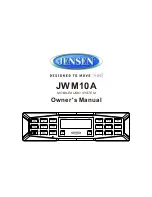
I n s t a l l a t i o n & P r o g r a m m i n g M a n u a l
38
Call Barring
The system has five call barring classes for each extension, a different barring class can be active for
daytime operation and another for night time operation. The day/night switching details may be
found on page 43. An extension may also be set up for account code operation. The call barring class
is then dependant on the account number, not on the extension class of service, see page 29 for
further details.
The system speed dial numbers are exempt from call barring checks, see page 57 for programming
details.
Class
Restrictions
0 User
defined
1 User
defined
2 User
defined
3 User
defined
4
The user cannot make outgoing calls, except factory set emergency number
Incoming external calls can be answered
5
The user cannot make or answer external calls, except to factory set emergency number
When a call barring class is assigned to an extension then that extension cannot invoke recall to hold
or transfer for 2 seconds after the last digit is dialled, or 2 seconds after an incoming call is answered.
Default
No call barring is set. All extensions belong to class 0 – no barring.
Call bar class of service programming
Each call barring class 1 to 3 can have telephone numbers with up to 9 different prefixes barred.
Additionally any number which has a prefix found in the exempt table will be allowed if enabled for
that bar class.
The factory default is that all bar and exempt filters are blank on delivery.
Note: Emergency calls (000 in Australia, and 111 in New Zealand) are always possible, regardless of
call bar programming.
Filter
Class 1
Class 2
Class 3
Bar Number
1
(y/n)
(up to 6 digits)
2
3
4
5
6
7
8
9
The exempt filters are all disabled by default for all classes. A table in the following format should be
used to keep a record of the settings.
Filter
Class 1
Class 2
Class 3
Class 4
Class 5
Exempt number
1
(y/n)
(up
to
10
digits)
2
3
4
5
6
7
8
9
















































